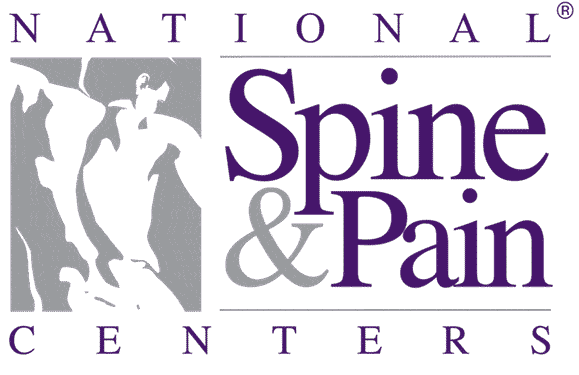Leukocyte-enriched platelet-rich plasma effectively and safely treated patients with lateral epicondylar tendinopathy in a recent study.
Published Study: Mishra AK. Am J Sports Med. 2013;doi:10.1177/0363546513494359.
Platelet-Rich Plasma Significantly Improves Clinical Outcomes in Patients With Chronic Tennis Elbow
A Double-Blind, Prospective, Multicenter, Controlled Trial of 230 Patients
1. Allan K. Mishra, MD*,†,
2. Nebojsa V. Skrepnik, MD, PhD‡,
3. Scott G. Edwards, MD§,
4. Grant L. Jones, MD‖,
5. Steven Sampson, DO¶,
6. Doug A. Vermillion, MD#,
7. Matthew L. Ramsey, MD**,
8. David C. Karli, MD, MBA†† and
9. Arthur C. Rettig, MD‡‡
†Department of Orthopedic Surgery, Menlo Medical Clinic, Stanford University Medical Center, Menlo Park, California
‡Tucson Orthopaedic Institute, Tucson, Arizona
§Division of Hand and Elbow Surgery, Georgetown University Hospital, Washington, District of Columbia
‖Department of Orthopaedic Surgery, The Ohio State University, Columbus, Ohio
¶The Orthohealing Center and The Orthobiologic Institute, Los Angeles, California
#Orthopaedic Research Clinic, Anchorage, Alaska
**Department of Orthopaedic Surgery, Thomas Jefferson University, Philadelphia, Pennsylvania
††The Steadman Clinic, Vail, Colorado
‡‡Methodist Sports Medicine, Indianapolis, Indiana
Investigation performed at Department of Orthopaedic Surgery, Menlo Medical Clinic, Stanford University Medical Center, Menlo Park, California
*Allan K. Mishra, MD, Department of Orthopedic Surgery, Menlo Medical Clinic, Stanford University Medical Center, 1300 Crane Street, Menlo Park, CA 94025 (e-mail: am@totaltendon.com).
Abstract
Background: Elbow tenderness and pain with resisted wrist extension are common manifestations of lateral epicondylar tendinopathy, also known as tennis elbow. Previous studies have suggested platelet-rich plasma (PRP) to be a safe and effective therapy for tennis elbow.
Purpose: To evaluate the clinical value of tendon needling with PRP in patients with chronic tennis elbow compared with an active control group.
Study Design: Randomized controlled trial; Level of evidence, 1.
Methods: A total of 230 patients with chronic lateral epicondylar tendinopathy were treated at 12 centers over 5 years. All patients had at least 3 months of symptoms and had failed conventional therapy. There were no differences in patients randomized to receive PRP (n = 116) or active controls (n = 114). The PRP was prepared from venous whole blood at the point of care and contained both concentrated platelets and leukocytes. After receiving a local anesthetic, all patients had their extensor tendons needled with or without PRP. Patients and investigators remained blinded to the treatment group throughout the study.
Results: Patient outcomes were followed for up to 24 weeks. At 12 weeks (n = 192), the PRP-treated patients reported an improvement of 55.1% in their pain scores compared with 47.4% in the active control group (P = .094). At 24 weeks (n = 119), the PRP-treated patients reported an improvement of 71.5% in their pain scores compared with 56.1% in the control group (P = .027). The percentage of patients reporting significant elbow tenderness at 12 weeks was 37.4% in the PRP group versus 48.4% in the control group (P = .036). At 24 weeks, 29.1% of the PRP-treated patients reported significant elbow tenderness versus 54.0% in the control group (P < .001). Success rates for patients with 24 weeks of follow-up were 83.9% in the PRP group compared with 68.3% in the control group (P= .012). No significant complications occurred in either group.
Conclusion: Treatment of chronic tennis elbow with leukocyte-enriched PRP is safe and results in clinically meaningful improvements compared with an active control group.
The Study
In a randomized control trial, Allan K. Mishra, MD, of the orthopedic surgery department, Menlo Medical Clinical, Stanford University Medical Center, and colleagues studied 230 patients with chronic lateral epicondylar tendinopathy (tennis elbow) who were treated over 5 years at 12 centers. The patients, symptomatic for at least 3 months and unresponsive to conventional therapy, were divided into two groups: platelet-rich plasma recipients (PRP; n=116) or active controls (n=114). Venous whole blood at initiation was used to prepare the PRP that contained concentrated platelets and leukocytes.
Patients and investigators were masked throughout the study; patients had their extensor tendons needled with or without PRP after receiving local anesthetic. Patients were followed for up to 24 weeks.
The Results
PRP-treated patients reported a 55.1% improvement in pain scores compared with 47.4% of active controls at 12 weeks (n=192 patients; P=.094). At 24 weeks, PRP patients reported 71.5% improvement in pain scores compared with 56.1% of controls (n=119 patients; P=.027).There were 37.4% of PRP-treated patients vs. 48.4% of the control group reporting significant elbow tenderness at 12 weeks (P=.036), At 24 weeks, elbow tenderness decreased to 29.1% of PRP-treated patients, while discomfort increased to 54% among controls (P<.001).
PRP patients had 83.9% success rates at 24 weeks of follow-up compared with 68.3% for controls (P=.012). Neither group reported significant complications.
“Treatment of chronic tennis elbow with leukocyte-enriched PRP is safe and results in clinically meaningful improvements compared with an active control group,” the researchers concluded.
